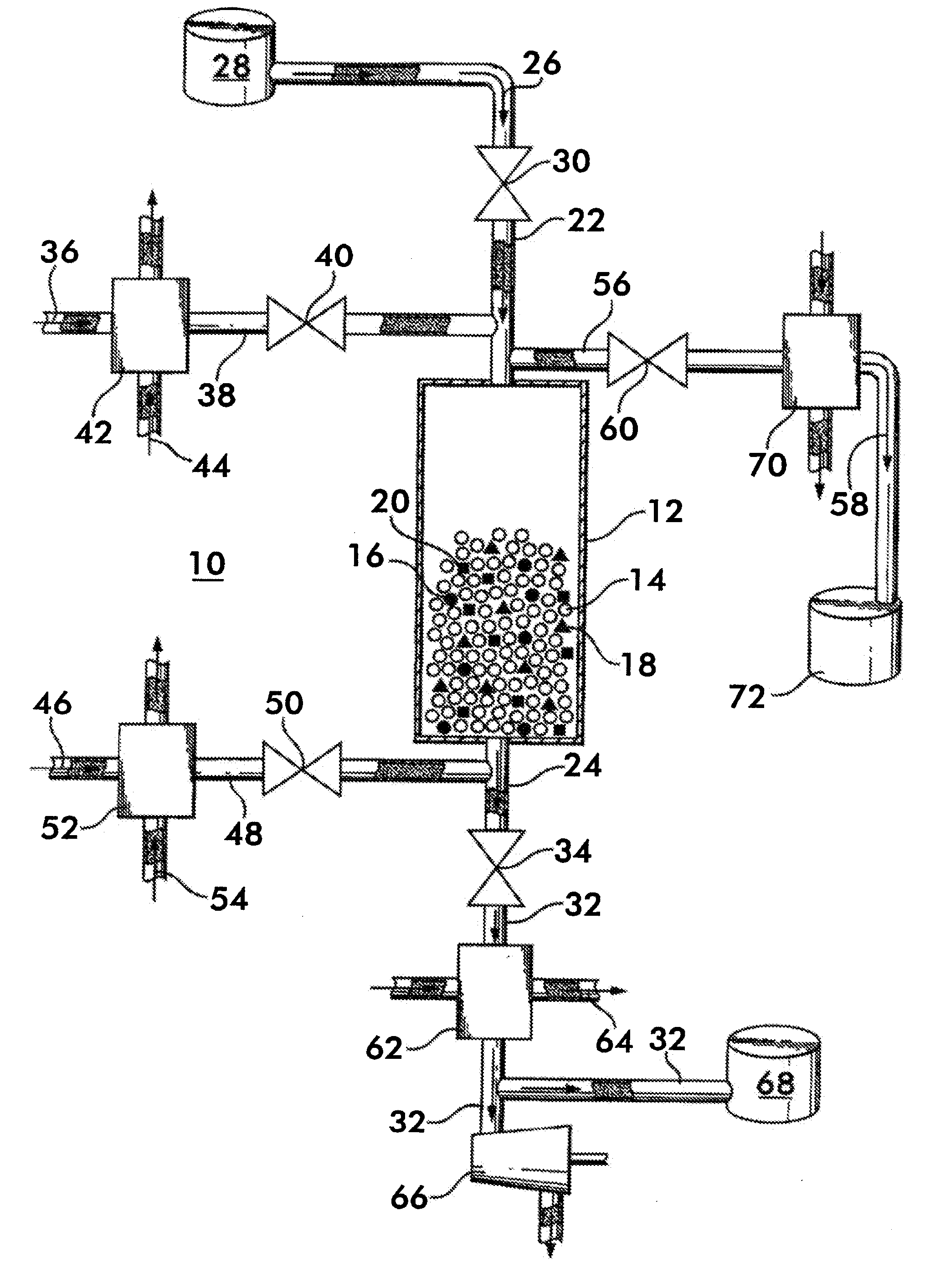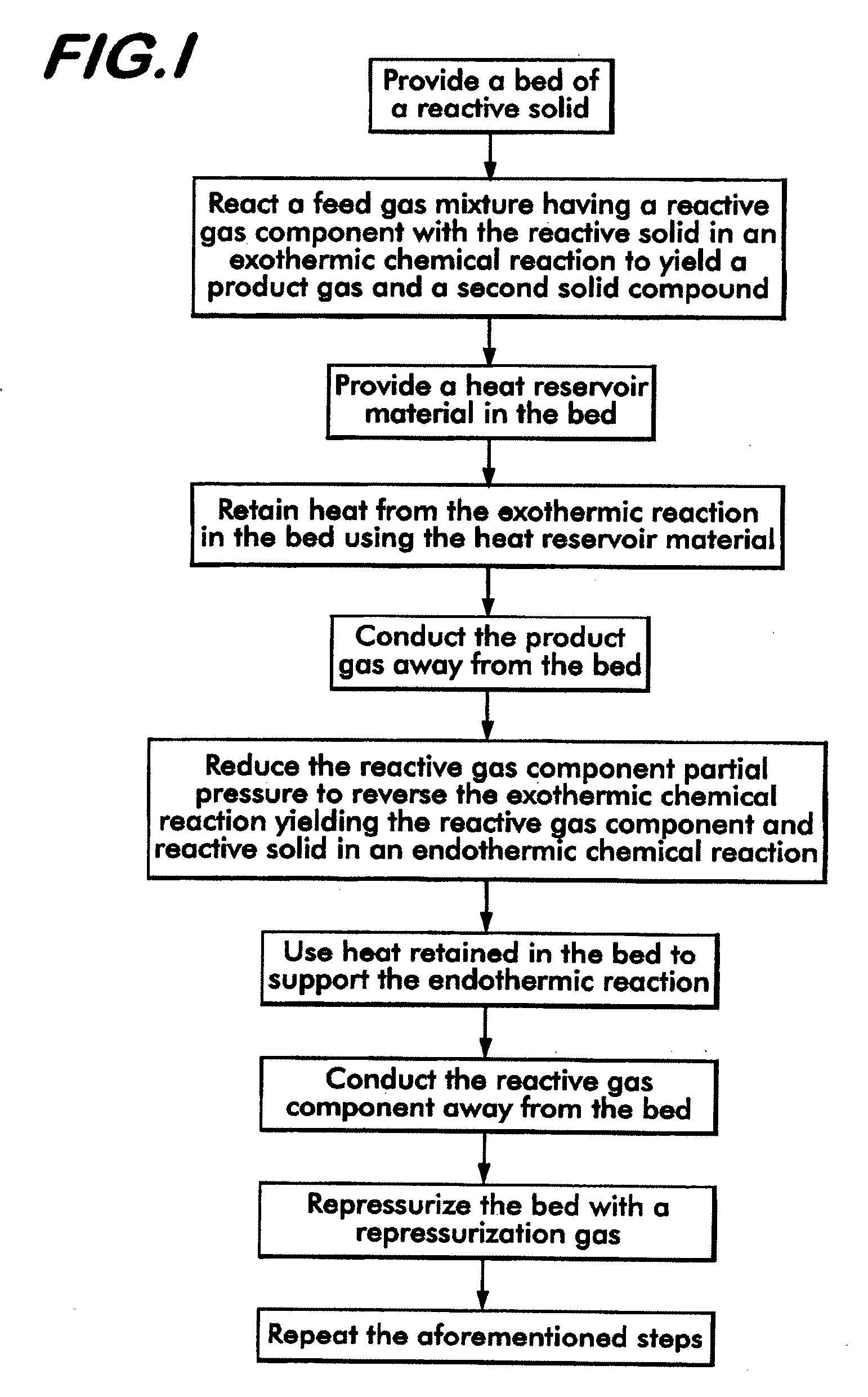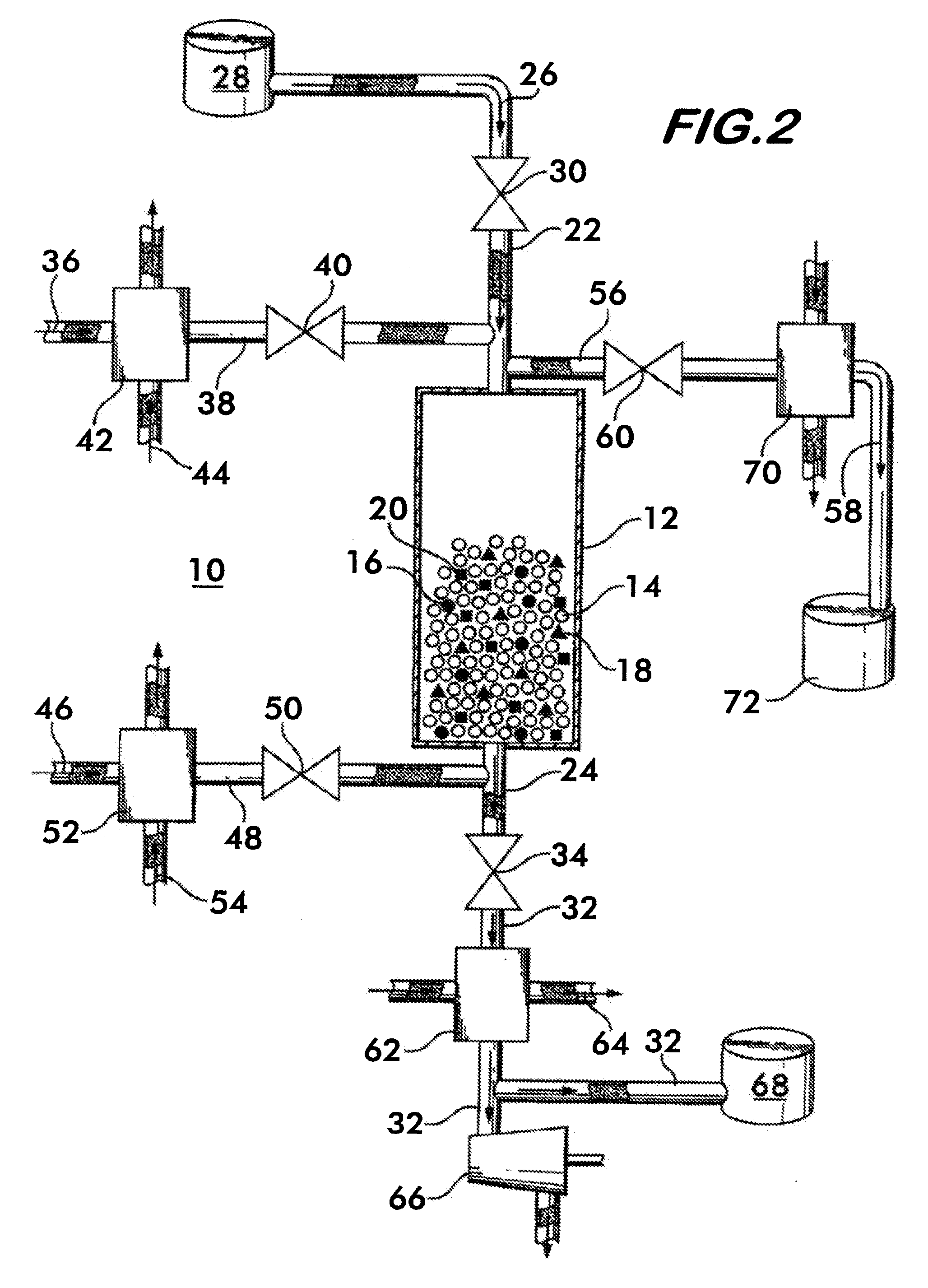Carbon Dioxide Separation Via Partial Pressure Swing Cyclic Chemical Reaction
a cyclic chemical reaction and carbon dioxide technology, applied in the direction of hydrogen separation using solid contact, metal/metal-oxide/metal-hydroxide catalyst, chemical production, etc., can solve the problems of significant heat exchange capital expenditure and unavoidable energy loss, and the description of the high temperature and high temperature separation process of ambient temperature and high temperature,
- Summary
- Abstract
- Description
- Claims
- Application Information
AI Technical Summary
Benefits of technology
Problems solved by technology
Method used
Image
Examples
Embodiment Construction
[0041]The method of separating CO2 from a syngas according to the invention uses a bed of high temperature reactive solids, defined herein as solids that can react with CO2 in the temperature range of 400° C.-800° C. with a heat of reaction greater than 15 kcal / gmole of CO2. By bed is meant a grouping of solid matter which provides a surface area which can contact a gas or other fluid to facilitate a chemical or physical reaction between the solid matter and the gas. Known approaches for using these types of materials utilize thermal regeneration at temperatures of 800° C. and above. The method according to the invention utilizes these materials in a process cycle which includes a regeneration step where the partial pressure of CO2 in the bed is reduced to a level below the feed gas mixture. This can be accomplished by either reducing the total gas pressure or reducing the CO2 concentration. Another key aspect of the invention relates to heat retention in the bed—the heat of reactio...
PUM
| Property | Measurement | Unit |
|---|---|---|
| temperature | aaaaa | aaaaa |
| temperature | aaaaa | aaaaa |
| partial pressure | aaaaa | aaaaa |
Abstract
Description
Claims
Application Information
 Login to View More
Login to View More - Generate Ideas
- Intellectual Property
- Life Sciences
- Materials
- Tech Scout
- Unparalleled Data Quality
- Higher Quality Content
- 60% Fewer Hallucinations
Browse by: Latest US Patents, China's latest patents, Technical Efficacy Thesaurus, Application Domain, Technology Topic, Popular Technical Reports.
© 2025 PatSnap. All rights reserved.Legal|Privacy policy|Modern Slavery Act Transparency Statement|Sitemap|About US| Contact US: help@patsnap.com



